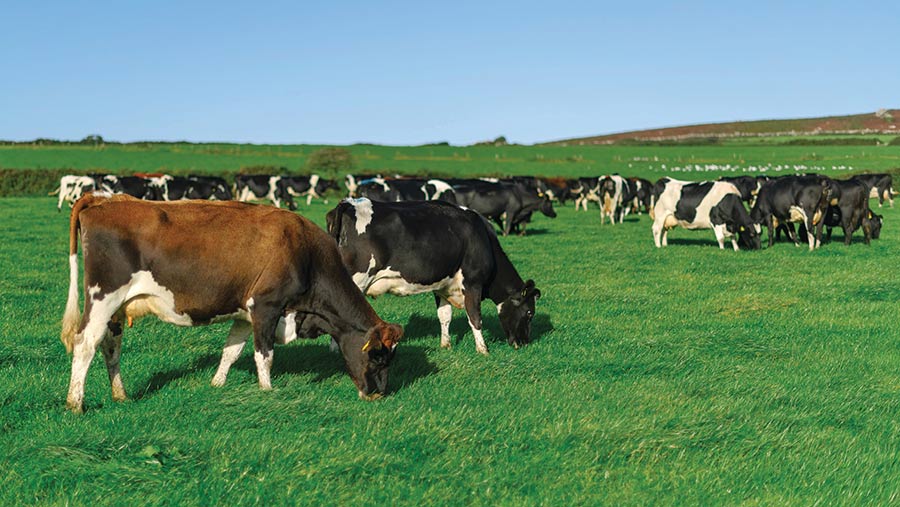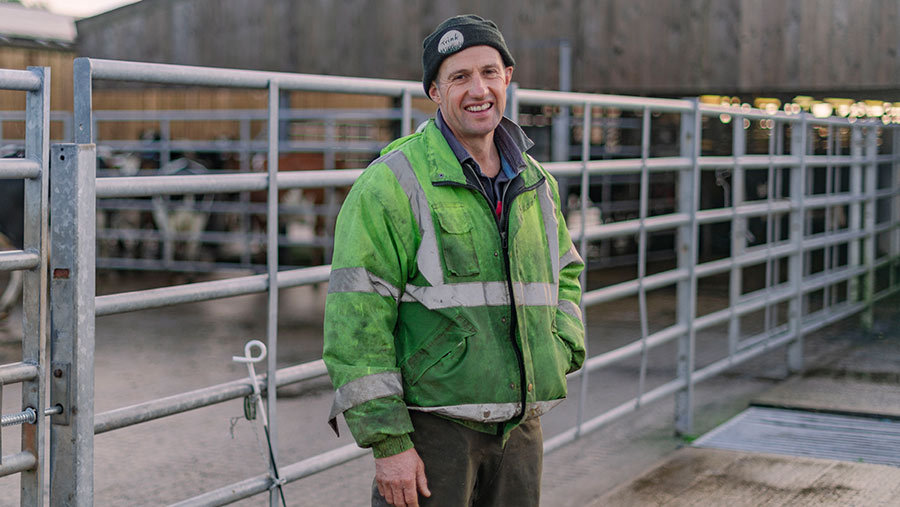How to manage surplus grass at spring turnout
 © Jim Wileman
© Jim Wileman Cornish dairy farmer and experienced grazing manager Chris Knowles will be sharing updates about his 2024 grazing season with Farmers Weekly.
In the first article of the series, Chris explains how the season has started.
See also: A dairy farmer’s tips on switching to once-a-day milking
Farm facts: Trink Farm, Cornwall
- 223ha, of which 110ha grazing platform
- 300 cross-bred cows
- Spring block-calving starting 20 February
- 60 cows calving in autumn
- Averaging 5,200 litres at 4.8% fat and 3.8% protein
- Operating 10 milkings in seven days past two years
- Granite soils and sloping topography
- 11-12t dry matter/ha grown each year
- Annual rainfall 1,295mm
- Height above sea level 137-198m
When did cows go out?
We turned out our autumn calvers on 30 January – one week early. We have forgiving soil and were able to get out grazing for two-and-a-half to four hours a day.
Cows were eating 4-5kg dry matter (DM) – maybe 6kg – a day. This gets some grass into their diet.
Conditions were manageable, but last week was horrendous.
Ground conditions are now soft, and we have to be very careful, pick our driest fields (higher up the hill and better drained) and not leave cows on a paddock for too long.
We started with 80 cows out for the first two weeks, then fresh calvers joined them as they calved.
We now have 140 cows out in the day for four to five hours and they are eating 7-8kg DM a head.
They are getting 3.5kg/day a head of concentrates: we feed 2.5kg in the parlour each milking.

© Jim Wileman
How is the grazing season going so far?
My main concern is that we have too much grass. I’ve never seen the ground so soft at the end of February, and it’s been our warmest and wettest winter ever.
Our average farm cover is 2,850kg at the moment, which is very high. It’s a nice problem to have – it is one we have got to manage.
We grew 7kg DM/ha a day from the end of November to the end of January.
Then it was 14kg DM/ha a day in February. This isn’t normal – usually it’s 4-5kg DM/ha and 8-10kg DM/ha, respectively.
We never stop growing grass; our soil temperature doesn’t drop much in winter. The problem with too much is preserving the quality.
We could end up with big covers at the end of March, which are difficult to graze well and will start to die at the bottom.
If I get it wrong, every week grass growth will increase and quality will deteriorate.
Normally, we apply fertiliser in late February/early March and my plan is not to apply any to low covers (less than 2,200-2,300kg DM/ha) until we have grazed them.
We could potentially make silage in April, which is ok but not ideal. Another option is to graze it with yearlings. I’ll decide in the next two weeks.
What’s this year’s grazing plan?
Ideally, we graze all the farm from mid-February until 10 April.
This is our first round, and “Magic Day” (when grass supply matches demand) is 8 April, and then we start our second round.
But if we have high covers, we won’t get through it all by 8 April.
My plan is to keep grass quality up and get residuals right – nothing different to most years.
We periodically measure fresh grass, and it is 12MJ/kg DM metabolisable energy (ME) and 21-23% crude protein.
I measured at the end of January, and again last week.
From March, I measure weekly to keep an eye on trends. We haven’t a problem with supply; it’s managing demand.
What do you need from now on?
In January, we had 104mm of rain, which is quite dry. But in February, it was 250mm and this is extreme.
There is a lot of moisture in the soil. Our difficult time is if we get a prolonged dry spell in May, June or into July.
My fear is that we have had a moisture extreme, and it could go to a dry extreme as things balance up.
I monitor grass growth, and experience tells you when you have had no rain and the soil is drying out.
But I won’t know until May if we will enter a dry period.
I need to plan for whatever might come up and be careful with stocking rates.
Advice to other grazing managers?
Many people are still nervous about turning out.
In March, I would say: be brave, be flexible. It’s OK to turnout for one day and not the next.
If it’s in your head to get two to three hours grazing and you’ve got the infrastructure, and one day you can’t manage it, that’s fine.
But try to be determined, rather than say it’s too wet and therefore not do it.
